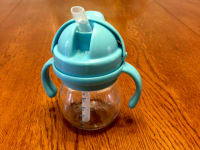Switching to sippy cups: When and how to make the transition
There are no hard-and-fast rules, but here are some guidelines.
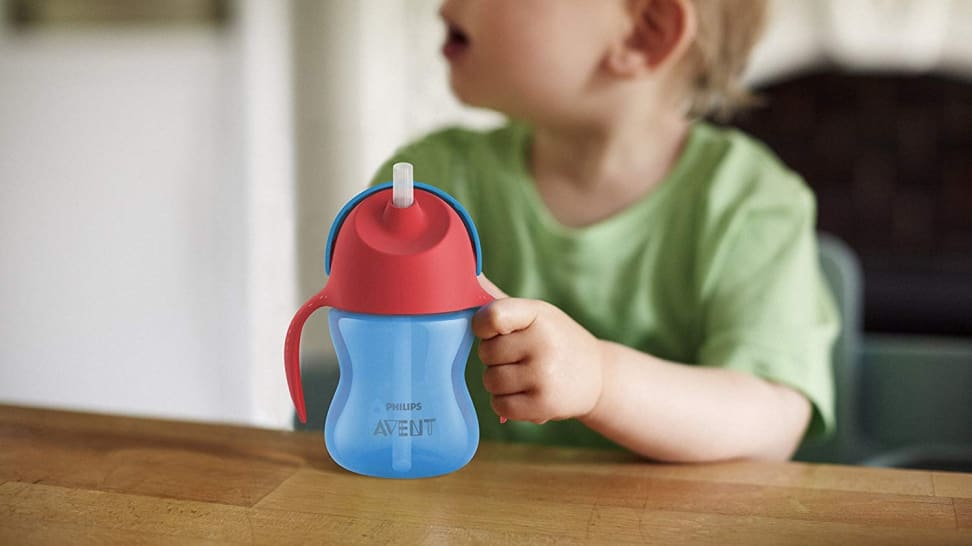 Credit:
Philips Avent
Credit:
Philips Avent
Products are chosen independently by our editors. Purchases made through our links may earn us a commission.
As much as you might wish you could pop open the Universal Guide to Parenting for answers to baby-related questions, that perfect guide doesn’t exist. There’s no definitive rule that will tell you when to switch your baby from bottles to sippy cups, but there are several tips and tricks from pediatricians and other experts that can help you along the way.
Determining when to introduce sippy cups to your baby will depend on a few factors—including their age, motor skills, and a recommendation from your pediatrician—but the final call will ultimately come down to you, your baby and both of your comfort levels!
What is a sippy cup?
A sippy cup, sometimes called a transition cup, is a small cup meant to train babies and toddlers to drink without spilling. They’re typically made from plastic and have screw-on tops to prevent liquid from leaking.
There are dozens of sippy cup designs to choose from, but most sippy cups have handles for children to easily grab, as well as a spout that won't leak, even if it takes a tumble.
Which sippy cup is best?
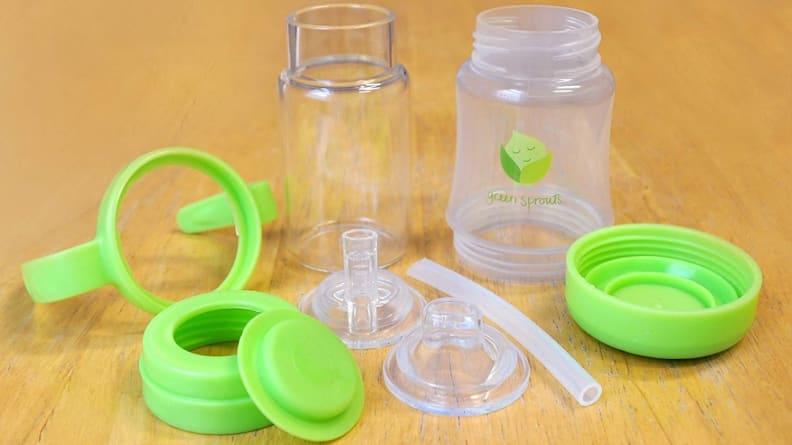
One of our favorite sippy cup comes with multiple spouts.
There are three main types of sippy cups to choose from, and they all come in different sizes, shapes, colors and materials.
- Spout: This is the "traditional" sippy cup. It features a screw-on lid and a spout for children to drink through. The spout prevents leakage and provides a soft area for them to suck liquid through.
-
Straw: Instead of a spout, some sippy cups feature a straw. Your child may take to this style if they enjoy sucking, but depending on the model, a straw may make for a messier experience. If you go this route, look for a cup with a non-leaking straw.
- Spoutless: The spoutless sippy cup most closely mimics a real cup. This is the dentist-recommended version, but it likely won’t be your child’s first choice when initially transitioning. Look for spoutless varieties after your child gets the hang of a regular sippy cup.
When to introduce a sippy cup
You can start introducing a sippy cup as early as 6 months, and most doctors recommend a full transition by 18 months. The American Dental Association recommends transitioning your child off bottles by their first birthday to help prevent tooth decay, while the American Academy of Pediatrics recommends switching to sippy cups by 12 to 18 months.
Generally, the deciding factors are your baby’s motor skills and their willingness to bond with the sippy cup. Before you introduce a sippy cup, your child should:
- Be able to hold their head up
- Have a firm and comfortable grasp
- Be able to sit up in a high chair
- Be able to bring things to their mouths
Speak with your pediatrician if you’re unsure when to switch from a bottle to a sippy cup. Introducing the cup early—even if that just means letting them hold it—may be a good way to start the transition.
How to transition to a sippy cup
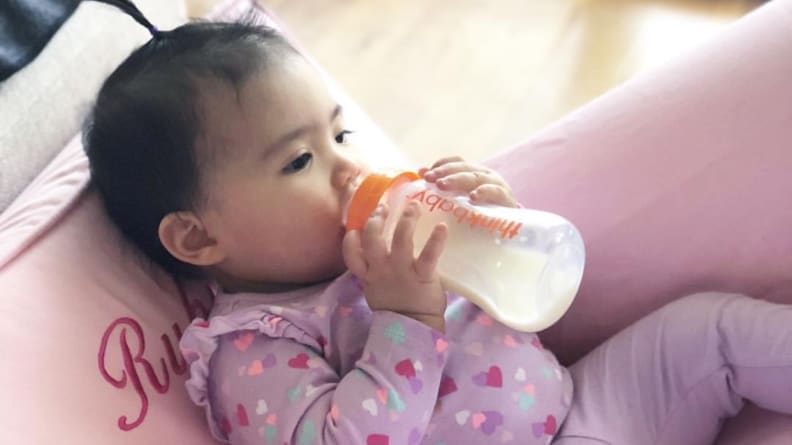
It might take a while to get your baby to use sippy cups.
The switch from bottle to sippy cup won’t happen overnight. You’ll want to start integrating the sippy cup into your baby’s routine slowly—don’t ditch the bottle immediately! Instead, plan to use both during the first few weeks of transitioning.
Here are some tips that will help you introduce sippy cups to your baby.
1. Go slow!
Take your time, and allow your baby to take theirs. Try not to get frustrated if you’re met with initial resistance. This process will take time, but it’ll be well worth it.
2. Let them play with it
Before filling the cup with liquid, give it to your baby and allow them to hold it, feel it and play with it. Let them get comfortable with its shape and learn to grasp it properly—this way, when you do introduce liquid into the equation, the object won’t be completely foreign to them.
3. Fill it with their favorite drink
During the first few weeks, keep the sippy cup filled with their favorite drinks. Only give them juice from the sippy cup—not the bottle—to incentivize them to use the cup.
4. Pick an easy-to-use cup
Sippy cups come with a variety of features, from soft grips to large spouts to high squeezability. You'll want to look for a cup that your child will find easy to use, and you might not get it right the first time. If you notice your little one is having trouble with the handle or spout, you may want to try a different design.
5. Replace the bottle one feeding at a time
Most experts recommend slowly transitioning from bottle to sippy cup, so try replacing one bottle feeding per day with a sippy cup. After your baby is familiar with its look and feel, they'll be more receptive to using the sippy cup regularly.
What if my baby doesn't want to give up the bottle?
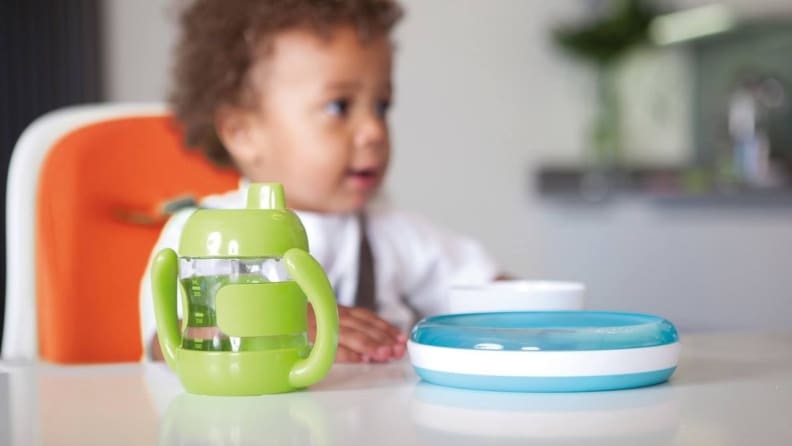
Your child might not want the sippy cup at first, and that's ok!
We can all get stubborn from time to time. If your child is resistant to the sippy cup or simply attached to their bottle, try these tips:
- Don’t let them sleep with a bottle: Instead of slowly introducing the sippy cup, try slowly removing the bottle from the equation. If your child sleeps with their bottle, start removing it from the crib each night. Allowing your child to sleep with their bottle encourages the bond between baby and bottle. Instead, try bottle feeding right before bedtime, then leaving it behind when you put them to bed.
- Introduce a new comfort item: If your child is attached to their bottle, try introducing a new comfort item—literally, a safety blanket. Give them a new item, such as a blanket or toy, to cling to as you take the bottle away.
-
Let them say no: Not feeling it? That’s OK in the beginning, especially if you’re introducing the sippy cup early. Listen to your child, put the cup away and try again tomorrow.
- Try a straw: Many children really enjoy sucking, so if you’re looking to transition away from bottles, try using straws during the early sippy cup stages. Some sippy cups come with straws, so look for this feature while you’re shopping for new cups.
- Switch halfway through feeding: Fill both the bottle and sippy cup with the same liquid, then get your child started by feeding with the bottle. Halfway through, switch to the sippy cup and see if they take to it.
A few more sippy cup best practices
You’re making the transition and feeling confident, so keep your momentum going. Here are a few additional guidelines that will help your baby develop a healthy relationship with their sippy cup.
- Don’t let them carry it around. A sippy cup shouldn't be a replacement for the bottle—it should only quench thirst and supplement feeding time. Don’t let your child carry it around, or it may become a safety object for them.
- Don’t bring it to bed. Similarly, letting your baby bring the sippy cup to bed may breed dependence—and make a mess. Keep sippy cup time limited to meals, snacks and thirst!
- Clean frequently. Even if you’re not switching liquids too frequently, you’ll want to wash out your sippy cups at least once a day. After all, these cups will get thrown, dropped and sucked, making them a breeding ground for bacteria.
- Remember, they’re transitional! Once your child becomes comfortable with a sippy cup, try introducing the spoutless version, then move on to lidless versions. Pediatricians recommend toddlers be using open cups by age 2.
Every baby is different—your little one might take to a sippy cup immediately, or you might have to slowly introduce it over the course of a few weeks. The key is to be patient and go at your own pace. They'll get there eventually, and then you'll have a hard time remembering what all the fuss was about.

